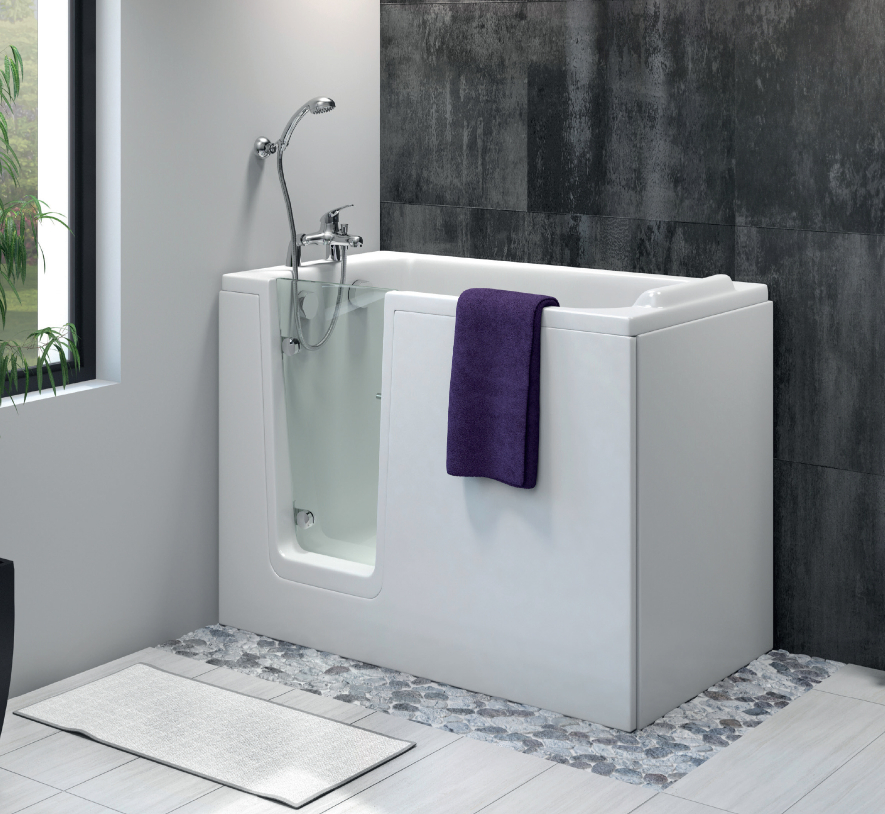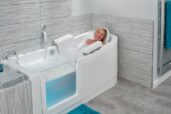Choosing from a wide array of assisted bathing solutions is about matching needs with preferences, and ultimately the best choice to make before starting work on a bathroom modification is to ensure it meets your particular needs.
When choosing an assisted shower there are two main options to choose, and depending on a person’s mobility needs either a walk-in shower or a wet room will be the best option.
A wet room is where an entire room is waterproofed and effectively becomes a shower area, whilst an assisted walk-in shower is a level-access shower that allows for people to walk, wheel or Zimmer in without a pronounced step seen in typical walk-in showers.
Both of these have particular advantages and disadvantages which make them more or less suitable for different living environments.
Here are the different considerations to make when looking into assisted showers.
Space Requirements
Space is an important consideration, particularly for homes with small or unusually shaped bathrooms that need to maximise their use of space.
Shower trays are manufactured in a limited range of sizes, so if a larger shower is needed to accommodate a wheelchair, there are more limits as to the space available than there would be with a wet room.
A wet room, by comparison, can take better advantage of a particular space and has room for adjustments to adapt to particular space and design requirements. They also provide the illusion of space and make a small bathroom look particularly stylish.
Water Control
One key difference between wet rooms and walk-in showers is where the water will go. Wet rooms do not have a door or a tray. Instead, most wet rooms have a tiny, imperceivable slope towards the plughole allowing water to gently drain.
However, water can splash quite far, and without any mitigation can travel up to a metre around the shower.
Most wet rooms take this into account, either by simply using a shower curtain or other partition.
A walk-in shower, on the other hand, does not have this problem as the shower is essentially a separate unit compared to the rest of the bathroom, and is designed with effective, fast-draining in mind.
Cost
Whether a particular bathing solution fits the budget can often be a deciding factor as to whether a wet room or walk-in shower is chosen, as well as the time and money it can cost to make them.
Walk-in showers are much cheaper to fit than a wet room because the focus is on fitting the tray, glass partition and showerhead, whilst a wet room needs to waterproof the entire room.
As well as this, to avoid too much water pooling in a wet room, a slope, mop or underfloor heating system is needed to quickly take care of standing water.
However, from a long term value perspective, wet rooms can add a considerable amount of value to a home, and for people who are not expecting to stay at their present property for a long time, may make the initial investment worth it in the long term.
Both are exceptionally stylish and functional solutions that are ideal for any modern bathroom upgrade.
If you’re working from home and need to update your mobility bathroom for extra accessibility, then visit our site today, or if you are interested in finding out more information call us on 01491 411041 or visit our website.
18 May,2021








